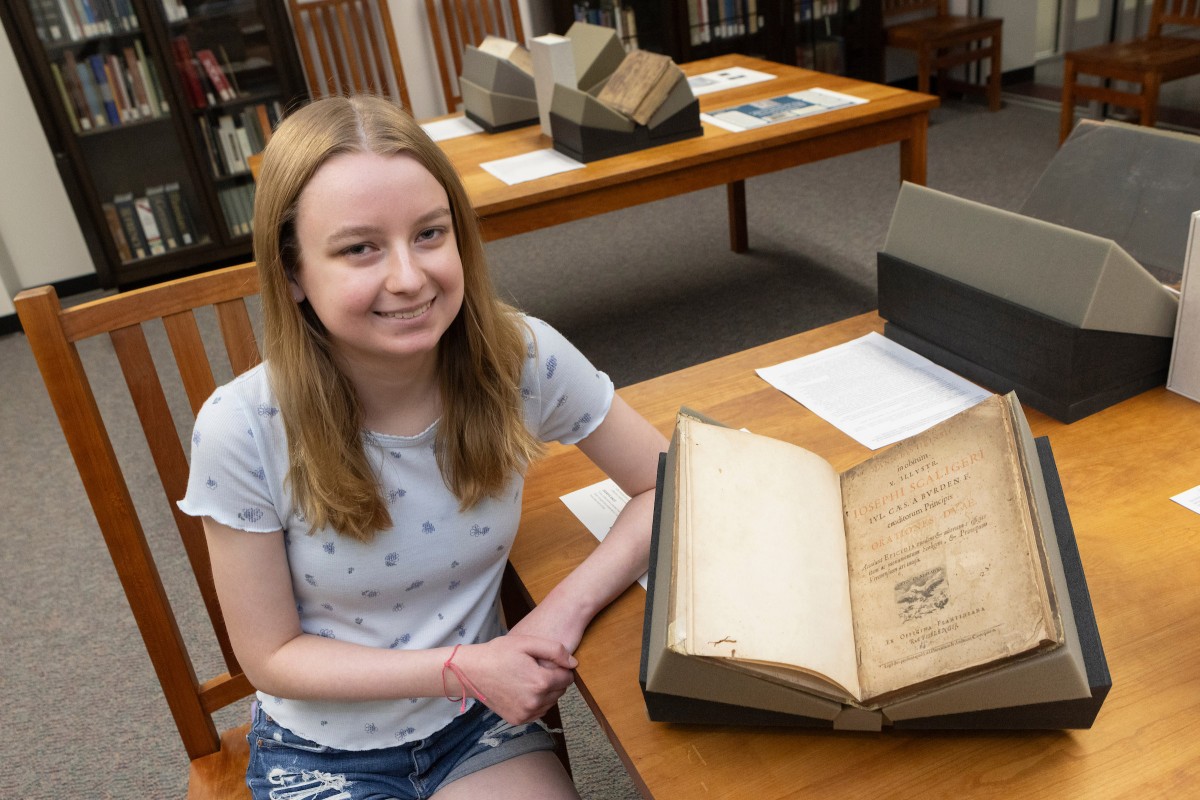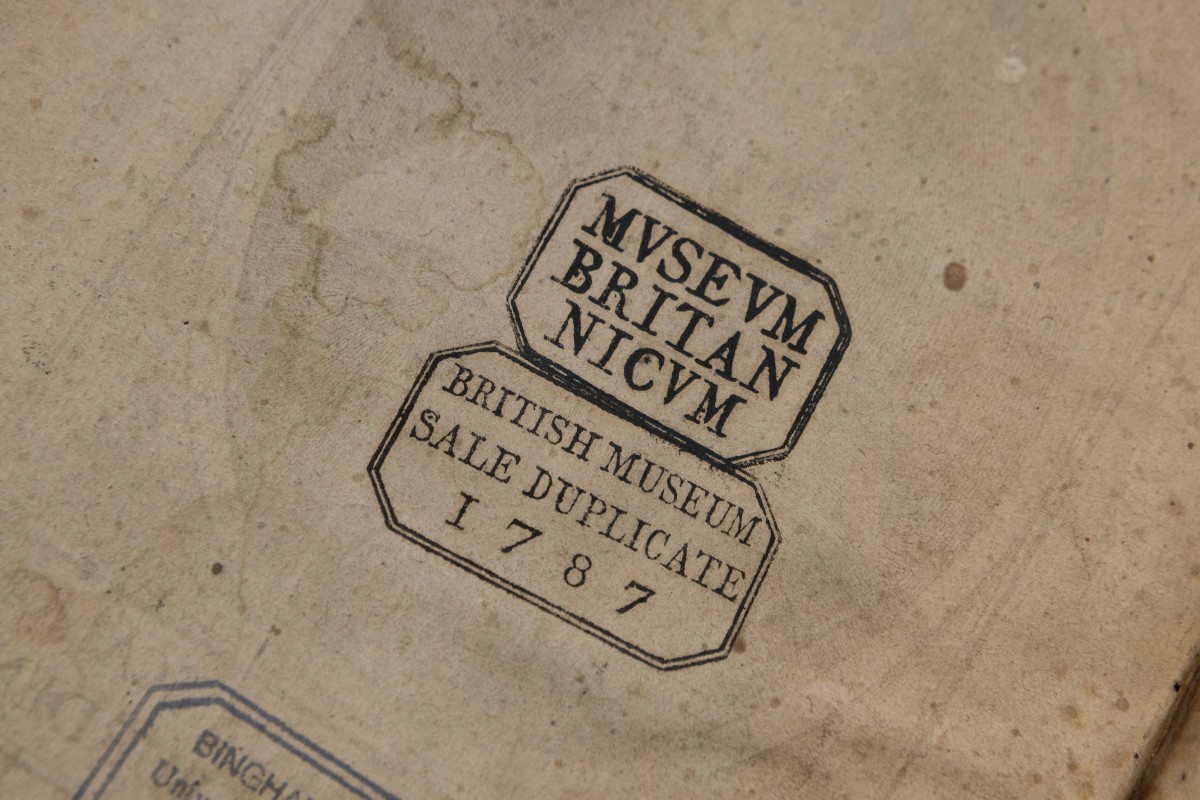Hidden treasure: Library book was part of the British Museum’s founding collection
First-year student Aeryn Zahn discovered the link through her Source Project research

Within the worn covers of the centuries-old book, Aeryn Zahn paused to consider the stamps.
They were, in their way, no different than the stamps you find in any old-fashioned library book. One stamp listed it as belonging to the British Museum, while a second stamp referenced a duplicate sale there in 1787.
With these clues, the first-year environmental sciences major traced the book back to the founding collector behind the British Museum itself, a discovery that rocked the Source Project’s Bookmaking stream and Binghamton University Libraries’ Special Collections.
“The fact that it was specifically owned by Sir Hans Sloane is particularly significant because he is historically thought of as one of the great founding collectors of one of the most extensive collections of books in the world,” said Associate Professor of English Bridget Whearty.
The Source Project gives first-year students the opportunity to conduct meaningful research in the humanities and social sciences. Led by Whearty and Special Collections Librarian Jeremy Dibbell, “Bookmaking: From Stone Tablets to E-Readers” introduces students to the history and evolution of the physical text. Each student then chooses a book that interests them and becomes a “book detective,” chasing down the stories behind the creation of each book, who owned it before it found its way to Binghamton, and how it was marketed, illustrated or preserved, Dibbell explained.
“Many of our books in Special Collections haven’t really been studied before,” Whearty said. “Their stories have yet to be uncovered.”
The book Zahn chose — Danielis Heinsii In obitum v. illustr. Iosephi Scaligeri — probably wouldn’t be considered a compelling read today. Published in Leiden, it contains a funeral sermon by Daniel Heinsius memorializing classics scholar Joseph Scaliger, who died in 1609, the year of publication; it also includes a second Scaliger funeral sermon by Dominique Baudius and a 1613 essay by Heinsius on Greek epigrams bound into the volume later.
Sloane’s name isn’t listed anywhere in the physical book, said Zahn, who traced its history through the British Museum stamp.
“They color-coded their stamps and had specific stamp designs based on where the book came from,” Zahn explained. “That stamp was from the Sloane collection. I confirmed it was his because I found the catalog records of this collection.”
While Zahn described her discovery as “largely by accident,” her teachers disagreed, saying that “this kind of ‘serendipity + hard work’ is how humanities research works.” She made her discovery on a Friday, precipitating a flurry of emails with Jeremy Dibbell.
“I was sort of vibrating,” he quipped. “It’s not the sort of thing that comes along every day.”
Reading the emails, Whearty gasped at the discovery: Sloane looms large over the book-collecting world and has received renewed attention as scholars assess how much of his wealth and collection were founded on slavery. After his death, the British Parliament purchased Sloane’s collections and used them, among others, to establish the world-famous British Museum.
“Scholars have determined that as many as 10,000 of Sloane’s books were sold off as duplicates by the British Museum, and through Aeryn’s discovery, we now know that one of those books ended up at Binghamton,” Dibbell said.
It wasn’t an easy history to confirm. The British Library’s Sloane Printed Books database has been down since October because of a catastrophic cyberattack. In a workaround, Dibbell found a digitized copy of a microfilm containing thousands of black-and-white images of handwritten pages from Sloane’s own catalog — and the book was on it.
“A huge part of the significance of Aeryn’s find is that it really shows what well-supported, determined first-year students are capable of,” Whearty said. “The Source Project is an incredible program.”
Zahn doesn’t yet know how Binghamton obtained the book, which probably landed in the library by at least the early 1980s. However, she discovered some of the other hands the book had passed through following its time in the Museum. To continue tracing its past, she has signed up for the Source Project’s optional third semester.
“And then, hopefully, I can write something that gets published,” she said.

